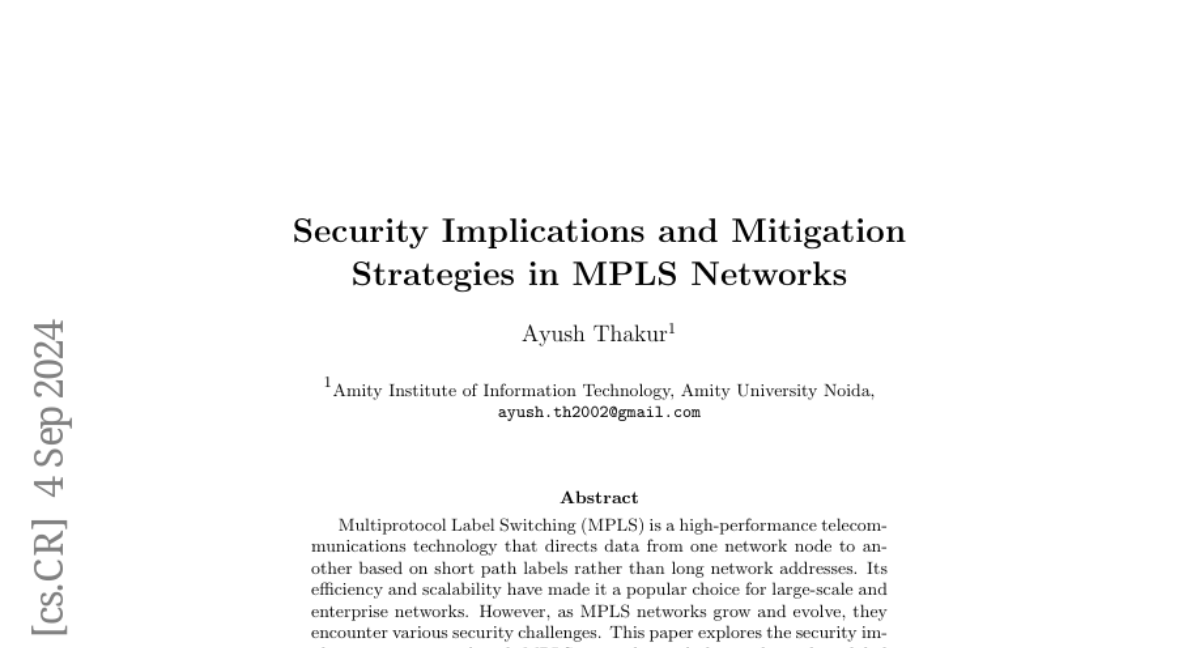Post
2927
Enhancing Distributed Systems with Self-Healing Nodes and Adaptive Data Sharding
Paper: Self-healing Nodes with Adaptive Data-Sharding (2405.00004)
The paper introduces an innovative approach to improve distributed systems by integrating self-healing nodes with adaptive data sharding. This method leverages advanced concepts like self-replication, fractal regeneration, and predictive sharding to enhance scalability, performance, fault tolerance, and adaptability.
Key Concepts:
- Self-Replication: Nodes can create copies of themselves or their data to aid in recovery and load balancing.
- Fractal Regeneration: Nodes can reconfigure and restore their functionality after partial damage, inspired by natural fractals.
- Predictive Sharding: Nodes can anticipate future data trends and proactively adjust data distribution to optimize performance.
Methodology:
The approach consists of four main steps:
- Temporal data sharding based on data's temporal characteristics.
- Self-replicating nodes to enhance data availability and reliability.
- Fractal regeneration for robust recovery mechanisms.
- Predictive sharding using consistent hashing to anticipate and adapt to future data trends.
Results and Analysis:
Experimental evaluations show that this approach outperforms existing data sharding techniques in scalability, performance, fault tolerance, and adaptability. The use of synthetic data and workload generators created realistic scenarios for testing.
Applications:
The methodology can be applied to various domains such as distributed database systems, blockchain networks, IoT, and cloud computing, offering improvements in data distribution efficiency and system resilience.
Paper: Self-healing Nodes with Adaptive Data-Sharding (2405.00004)
The paper introduces an innovative approach to improve distributed systems by integrating self-healing nodes with adaptive data sharding. This method leverages advanced concepts like self-replication, fractal regeneration, and predictive sharding to enhance scalability, performance, fault tolerance, and adaptability.
Key Concepts:
- Self-Replication: Nodes can create copies of themselves or their data to aid in recovery and load balancing.
- Fractal Regeneration: Nodes can reconfigure and restore their functionality after partial damage, inspired by natural fractals.
- Predictive Sharding: Nodes can anticipate future data trends and proactively adjust data distribution to optimize performance.
Methodology:
The approach consists of four main steps:
- Temporal data sharding based on data's temporal characteristics.
- Self-replicating nodes to enhance data availability and reliability.
- Fractal regeneration for robust recovery mechanisms.
- Predictive sharding using consistent hashing to anticipate and adapt to future data trends.
Results and Analysis:
Experimental evaluations show that this approach outperforms existing data sharding techniques in scalability, performance, fault tolerance, and adaptability. The use of synthetic data and workload generators created realistic scenarios for testing.
Applications:
The methodology can be applied to various domains such as distributed database systems, blockchain networks, IoT, and cloud computing, offering improvements in data distribution efficiency and system resilience.



